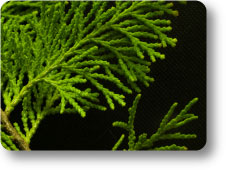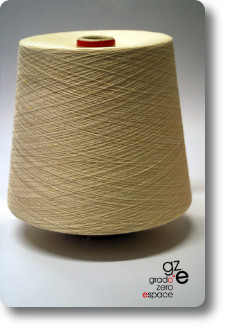The genus Cypressus is one of several genera within the family Cupressaceae, they are evergreen trees growing up to 50 m tall. Their leaves are scale-like, 2-6 mm long, arranged in opposite pairs, and persist for 3-5 years. The cypresses are native to scattered localities in mainly warm temperate regions in the northern hemisphere, including North and Central America, South Europe, North Africa, the Middle East, the Himalayas, Southern China and North Vietnam. It is a long-lived plant with a straight trunk, grey-brown bark and wrinkles along the longitudinal direction. The wood of Cypressus is very hard and it was used in building and furnishing : furnitures made of that wood are precious and able to repel moths thanks to its aromatic odour. From distillation of its leaves it is possible to obtain an oil used in pharmaceutical industry; besides, in accordance with some ancient scientist, Cypressus trees purify air.
There are a lot of different species of Cypressus, one of them is "Chamaecyparis obtusa" native to central Japan. It is a slow-growing tree which grows to 35 m tall with a trunk up to 1 m in diameter. The bark is dark red-brown while the leaves are scale-like, 2-4 mm long, blunt tipped (obtuse), green above, and green below. "Chamaecyparis obtusa" is grown for its very high quality timber in Japan, where it is used as a material for building. The wood is lemon-scented and light-colored with a rich, straight grain, and is highly rot-resistant. Another application of Cypress's wood comes from a particular processing of its bark to obtain natural textile fibres with anti-bacterial and relaxant characteristics, pleasant scent and insect-repellent properties.
Thanks to this special and innovative procedure, Grado Zero Espace was able to obtain a yarn (Cypress) with a count of 36/1 and containing 38% of Cypressus fibre. At the end, weaving that yarn, a mixed fabric (containing 50% of cotton) was manufactured having the same anti-bacterial, anti-mould, relaxing, deodorizing properties of the Cypressus yarn. It was so possible to realize another example of 100% natural textiles completely eco-compatible.
Specific tests, performed by a qualified external laboratory following the UNI EN ISO 20645, proved the antibacterial efficiency of a Cypress/Cotton fabric against Klebsiella pneumoniae and Staphylococcus aureus, with a reduction of the bacterial growth up to 60% and 85%, respectively.

